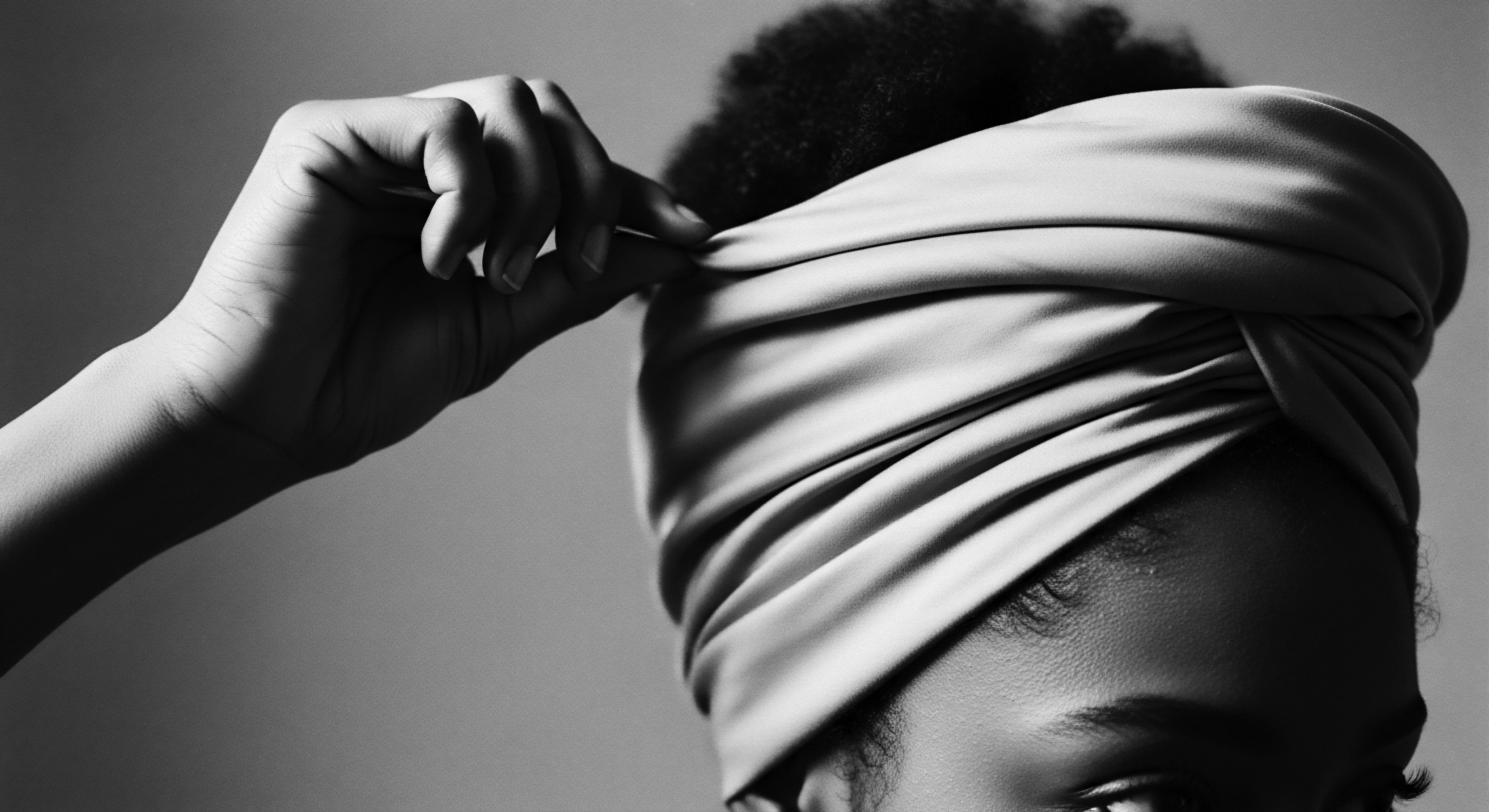
Fundamentals
Within the sacred expanse of Roothea’s living library, where each strand tells a story spanning generations, the Dermal Papilla stands as a foundational concept, a delicate wellspring from which the very narrative of our hair springs forth. To comprehend this minuscule yet mighty structure is to begin understanding the profound mechanics that give rise to the diverse textures, patterns, and strengths we celebrate across Black and mixed-race hair heritage. This biological nexus, nestled at the very base of each hair follicle, is not merely a collection of cells; it represents a primordial connection to life, growth, and the inherent vitality passed down through ancestral lines.
The dermal papilla, often envisioned as a small, thimble-shaped indentation at the follicle’s deepest point, comprises specialized mesenchymal cells. These cells are surrounded by a rich network of capillaries and nerve fibers, providing the essential sustenance and signals for hair formation. It acts as the hair’s very heart, pumping life into the nascent strand.
Without its sustained activity, the journey of a hair fiber from its cellular origins to its visible expression upon the scalp would cease. The significance of this structure extends beyond mere biology; it embodies the enduring spirit of growth and renewal, mirroring the resilience observed throughout the history of textured hair.
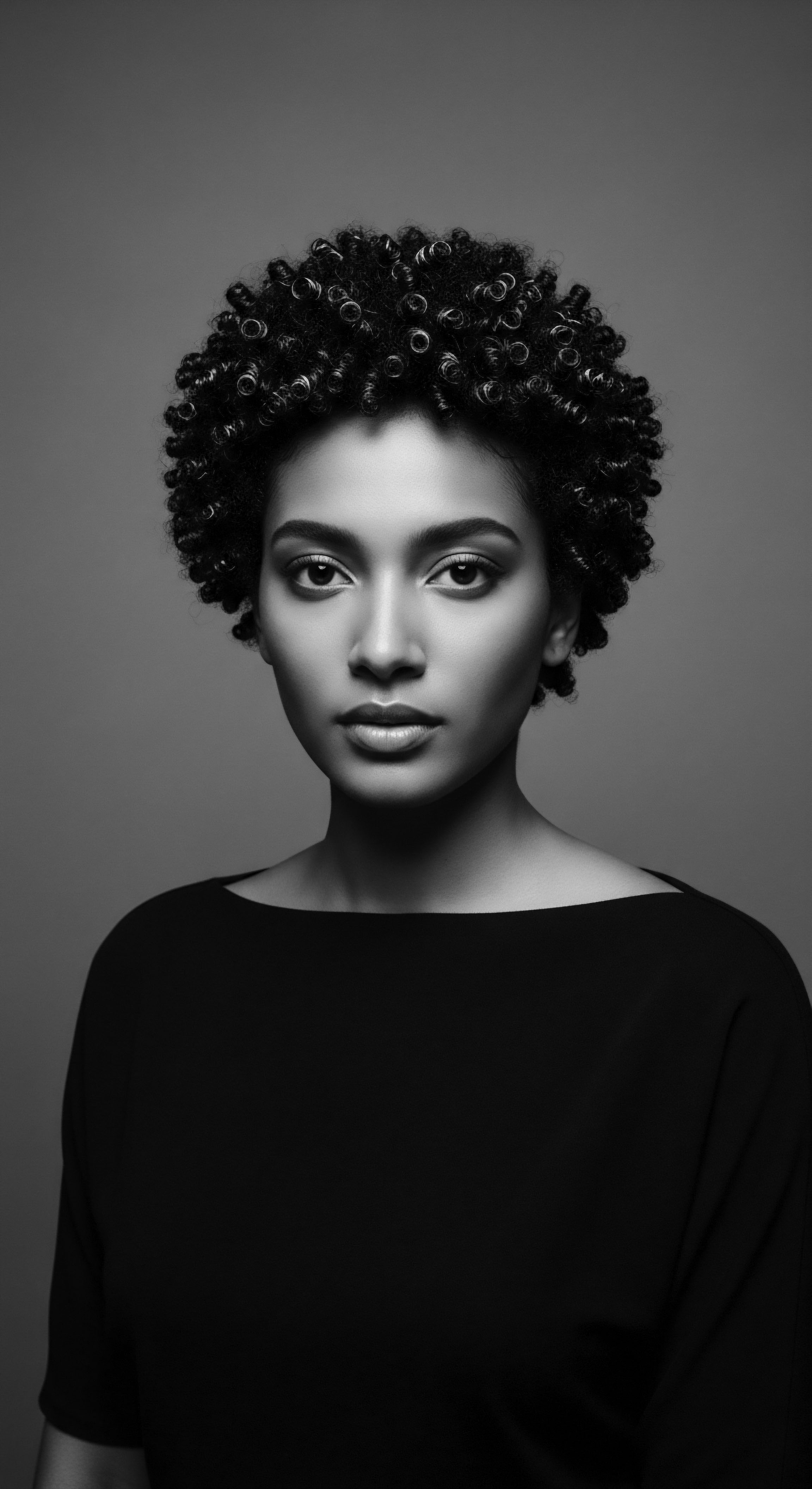
The Seed of a Strand
Consider the dermal papilla as the Seed of a hair strand. Just as a seed holds the blueprint for a towering tree, this cluster of cells carries the genetic instructions that dictate the hair’s unique characteristics. For textured hair, this means the predetermined curl pattern, the inherent strength, and the distinctive way each strand coils or kinks into its magnificent shape.
The dermal papilla’s position within the hair bulb places it in direct communication with the rapidly dividing cells of the hair matrix, which are responsible for producing the hair shaft. This continuous dialogue between the dermal papilla and the matrix cells is what sustains the anagen, or active growth, phase of the hair cycle.
The very first inklings of hair formation in a developing human begin with the aggregation of these dermal papilla cells. This initial gathering, a microscopic event, sets in motion a cascade of cellular interactions that culminate in the emergence of a hair follicle. This developmental origin speaks to the papilla’s enduring role, a testament to its unchanging biological significance across all hair types, yet particularly resonant when contemplating the unique journeys of textured hair, which has so often been misunderstood or marginalized.
The dermal papilla, a minuscule cellular cluster at the hair follicle’s base, orchestrates the growth and unique characteristics of each hair strand, serving as a biological cornerstone for textured hair heritage.
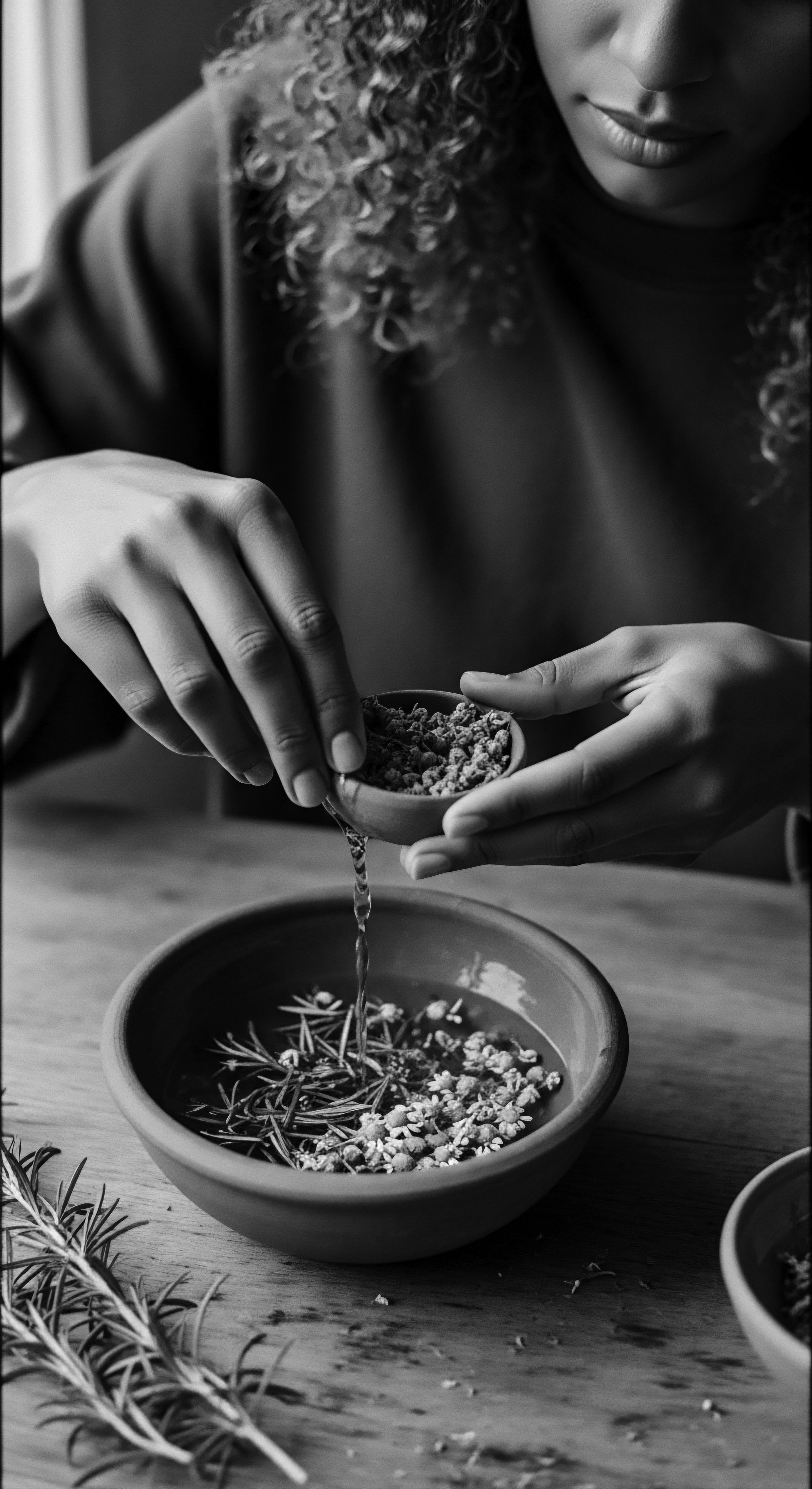
Nourishment from the Depths
The lifeblood of the hair strand flows through the dermal papilla. Its intricate vascular supply ensures a constant delivery of oxygen, nutrients, and growth factors directly to the hair matrix cells. This constant provisioning is paramount for vigorous hair growth and the maintenance of a healthy scalp environment.
Traditional hair care practices, passed down through generations within Black and mixed-race communities, intuitively recognized the importance of scalp health, often without explicit knowledge of the dermal papilla. These practices, such as gentle scalp massages and the application of nutrient-rich botanical oils, worked in concert to support this vital structure, fostering an environment conducive to robust hair.
The ancestral wisdom inherent in these practices, often dismissed as anecdotal, finds compelling validation in contemporary biological understanding. The rhythmic stimulation of the scalp, a common ritual in many African hair traditions, serves to enhance local blood circulation, directly benefiting the dermal papilla’s ability to receive and deliver essential resources. This continuous historical thread, from ancient care rituals to modern scientific explanations, illustrates the enduring connection between intuitive wisdom and biological truth.
- Blood Supply ❉ The capillaries within the dermal papilla transport vital oxygen and nutrients to the rapidly dividing cells responsible for hair growth.
- Growth Factors ❉ These cells secrete various signaling molecules that stimulate cell proliferation and differentiation within the hair matrix.
- Hormonal Influence ❉ The dermal papilla cells possess receptors for hormones like androgens, which can influence hair growth patterns and thickness, especially in certain areas of the body.
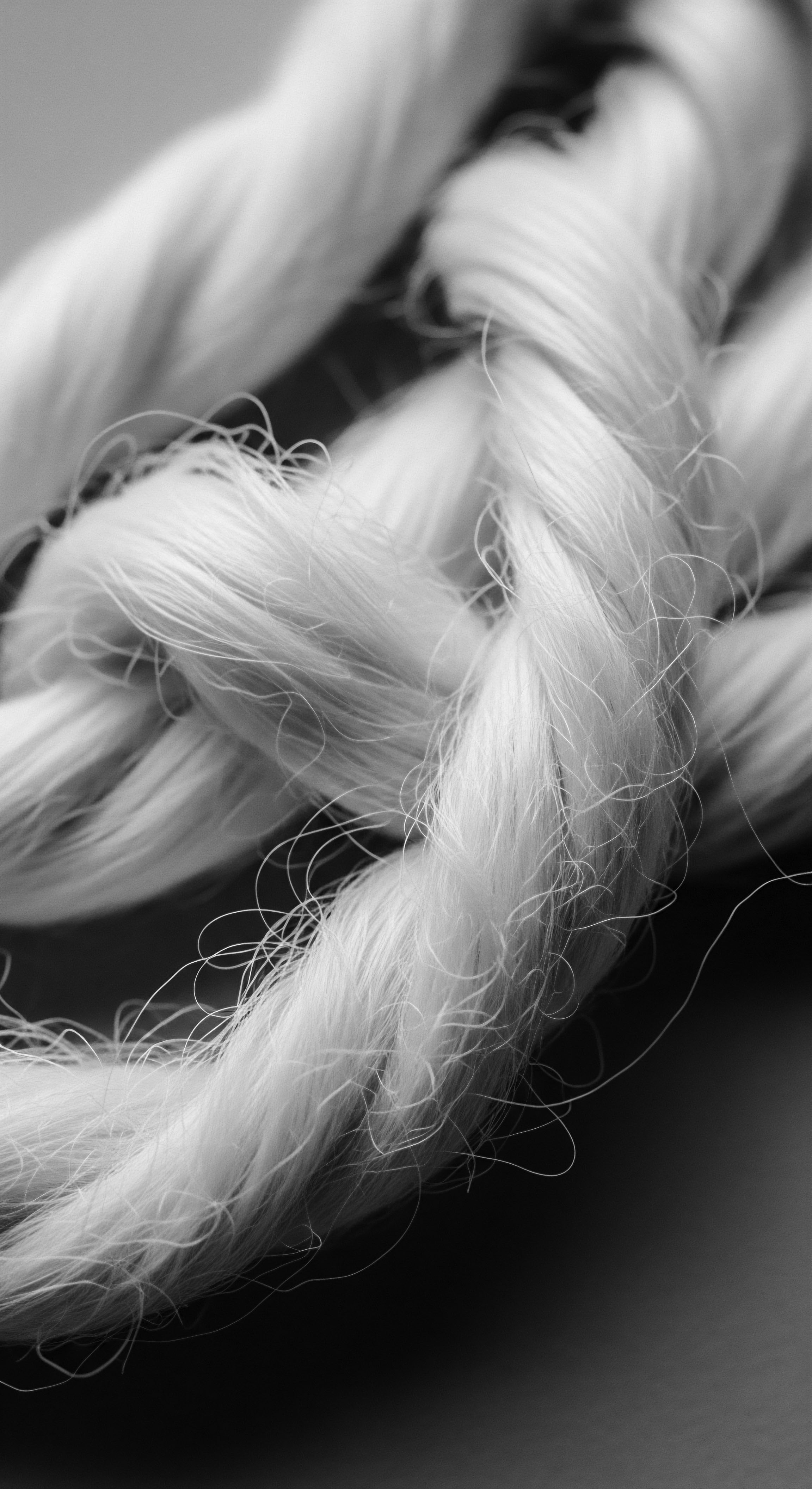
Intermediate
Expanding upon the foundational understanding, the dermal papilla’s meaning extends into its profound regulatory capabilities, acting as the hair follicle’s central command. This deeper interpretation unveils how this small cluster of cells actively orchestrates the complex dance of the hair growth cycle, a cyclical rhythm of growth, rest, and shedding that shapes the very expression of textured hair across individuals and generations. The significance of this regulatory power is particularly pronounced when considering the historical context of hair care, where ancestral practices often sought to optimize these natural rhythms, fostering vitality and length.
The dermal papilla cells are not merely passive recipients of nutrients; they are dynamic communicators. They engage in intricate cellular dialogues with the surrounding epithelial cells of the hair follicle, transmitting signals that dictate when a hair should grow, how long it should grow, and when it should enter its resting phase. This continuous exchange of biochemical messages, often through paracrine signaling, represents a sophisticated biological language. Understanding this language helps us appreciate the delicate balance required for sustained hair health, a balance often intuitively sought through traditional hair care approaches.
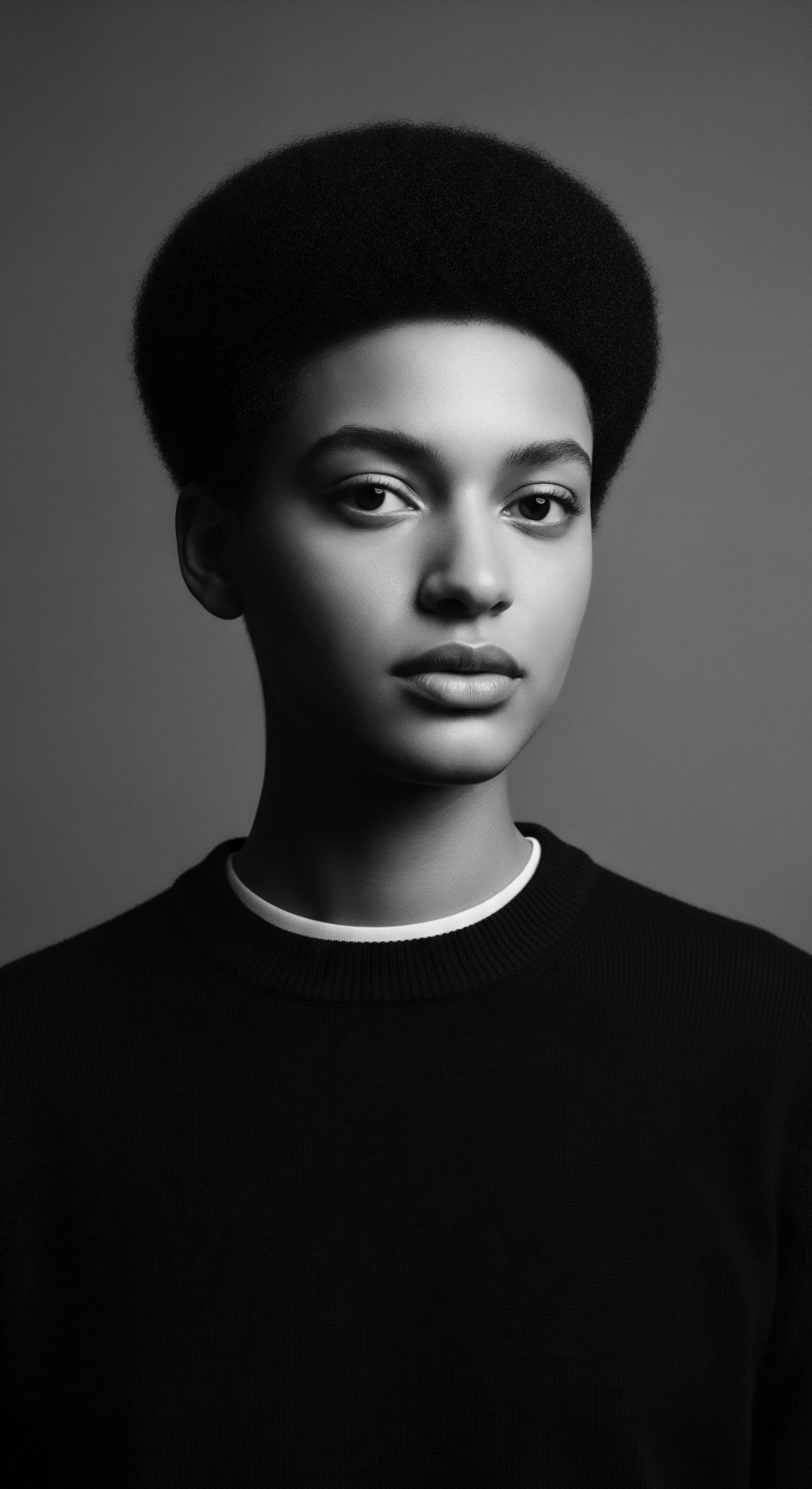
The Cycle’s Conductor
The hair growth cycle, a marvel of biological precision, consists of three primary phases ❉ Anagen (growth), Catagen (regression), and Telogen (rest). The dermal papilla is the conductor of this intricate symphony. During the anagen phase, the papilla cells are highly active, continuously signaling to the hair matrix cells, prompting them to divide and form the hair shaft. The length of this anagen phase is a primary determinant of how long a hair strand can grow, a factor of immense cultural significance for many textured hair communities where length has often been a marker of beauty, wisdom, or status.
As the anagen phase concludes, the dermal papilla initiates signals that lead to the catagen phase, where the follicle begins to shrink and detach from the papilla. Subsequently, in the telogen phase, the hair rests, and the old hair is eventually shed. The papilla then lies dormant, awaiting new signals to re-enter the anagen phase and initiate the growth of a new hair. This cyclical nature of hair growth, governed by the dermal papilla, speaks to a continuous process of renewal, a reflection of the enduring spirit of communities that have preserved their hair traditions through time.
The dermal papilla precisely regulates the hair growth cycle, acting as the follicle’s command center to direct phases of growth, regression, and rest.
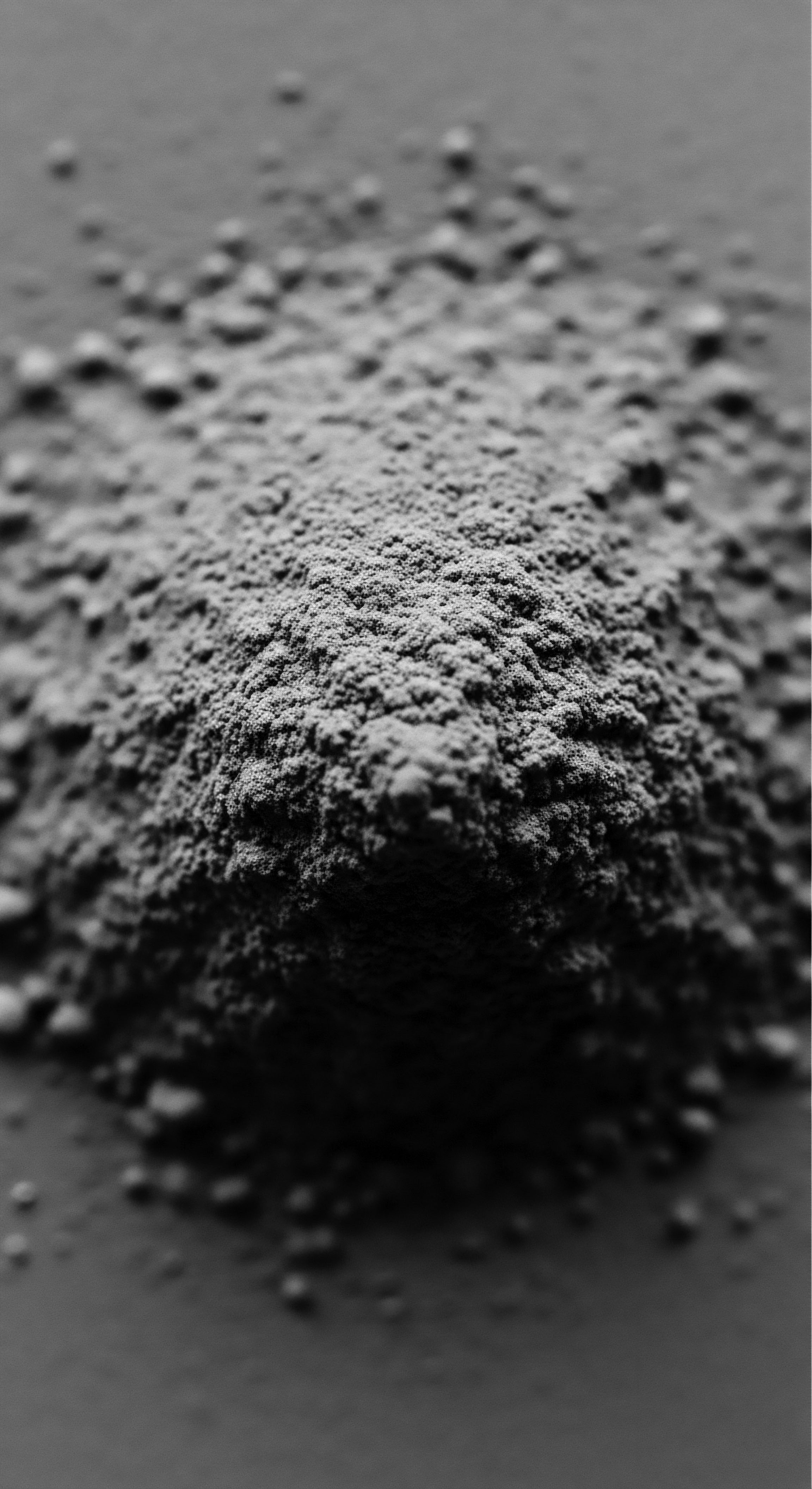
Ancestral Echoes in Follicular Health
The deep historical connection between hair and identity, particularly within Black and mixed-race communities, brings the dermal papilla into a unique cultural lens. Ancestral hair care practices, often passed down orally through generations, were not merely cosmetic; they were deeply intertwined with holistic wellbeing and communal identity. These practices, while lacking modern scientific terminology, often demonstrated an intuitive understanding of the conditions that promote a healthy hair growth cycle, indirectly supporting the dermal papilla.
For instance, the consistent application of natural oils and butters, such as Shea Butter or Coconut Oil, often accompanied by gentle massage, was a widespread practice. These rituals aimed to moisturize the scalp, reduce dryness, and minimize breakage, all of which contribute to a healthy environment for the hair follicle and its dermal papilla. The protective styling traditions—braids, twists, and locs—served to shield the delicate hair strands from environmental damage, thereby preserving the integrity of the follicle and allowing the hair to reach its genetic length potential. These actions, rooted in communal wisdom, fostered conditions where the dermal papilla could optimally perform its functions, leading to the resilient and vibrant hair that has long been a source of pride.
Consider the historical account of hair care in West African societies. Prior to colonial influences, hair was often seen as a spiritual conduit and a marker of social status, age, and marital standing. The elaborate styling and meticulous care rituals, often performed by elders or skilled artisans, were not just aesthetic endeavors; they were communal acts that sustained the health of the hair from its very source.
The ingredients used—from indigenous plant extracts to mineral-rich clays—were chosen for their perceived nourishing and strengthening properties, often targeting the scalp directly. These practices, in essence, were an ancestral form of follicular wellness, laying the groundwork for a robust dermal papilla.
The challenges faced by textured hair in post-colonial contexts, including the introduction of harsh chemical relaxers and the pressure to conform to Eurocentric beauty standards, inadvertently impacted the health of the dermal papilla. The chemical damage to the hair shaft and scalp inflammation could disrupt the delicate signaling pathways within the follicle, leading to breakage, thinning, and even permanent hair loss. The contemporary movement to reclaim and celebrate natural textured hair, therefore, represents not just a style choice but a profound return to ancestral wisdom, prioritizing the health and vitality of the hair from its very foundation—the dermal papilla.
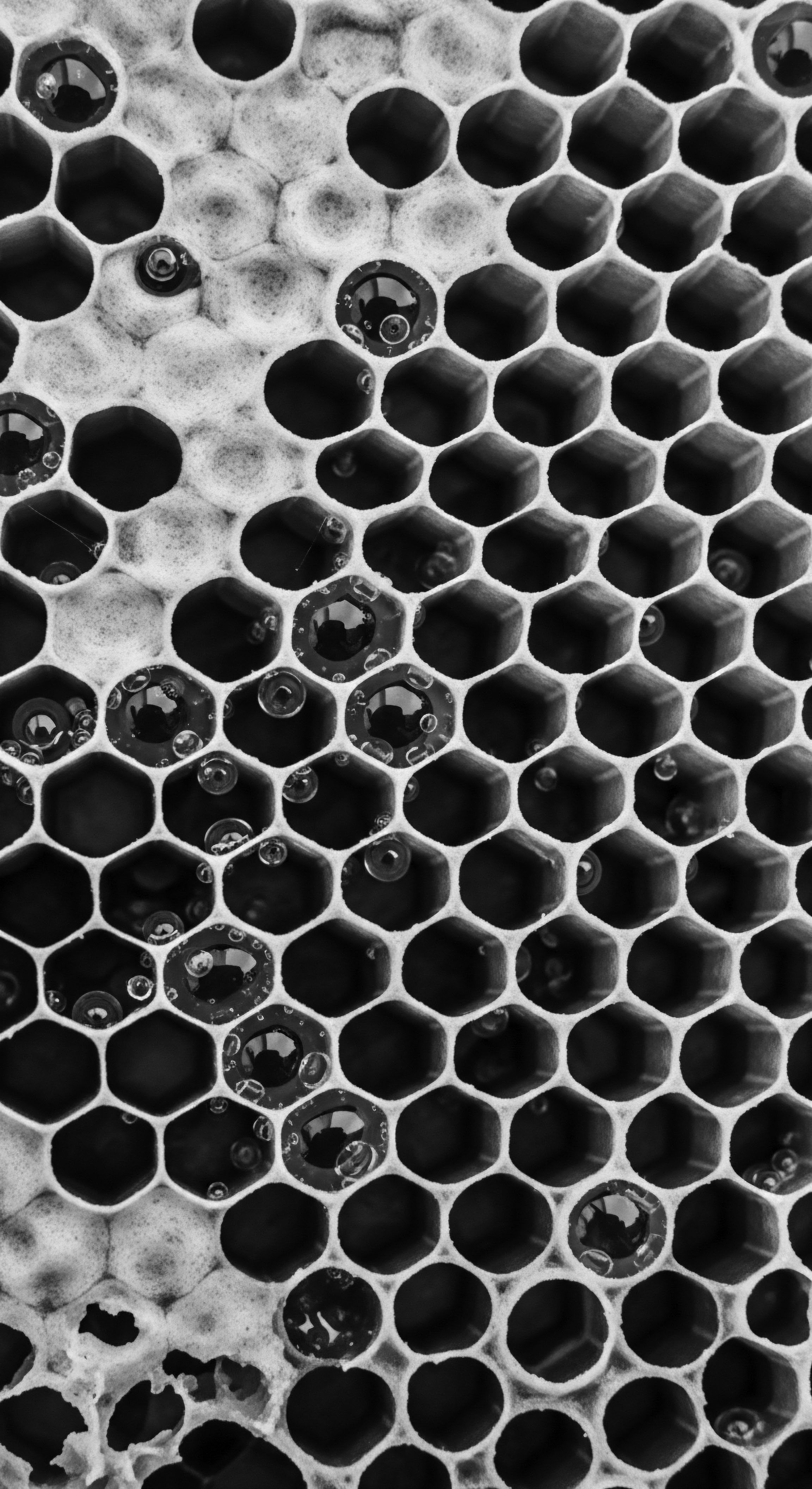
Academic
The academic definition of the Dermal Papilla transcends a simple biological explanation, positioning it as a dynamic, signal-transducing mesenchymal cell aggregate within the hair follicle, orchestrating the complex morphogenetic processes and cyclical regeneration of the hair shaft. Its profound significance, from a scholarly perspective, lies in its capacity for inductive signaling, directing the proliferation, differentiation, and patterning of epithelial cells that constitute the hair matrix and the subsequent formation of the hair fiber. This sophisticated biological interaction, while universal, acquires a unique academic resonance when examined through the lens of textured hair heritage, revealing layers of co-evolution between human biological adaptability and culturally specific care practices.
From a cellular biology standpoint, the dermal papilla cells (DPCs) are distinguished by their unique gene expression profiles and their extraordinary inductive capabilities. These cells secrete a repertoire of growth factors, cytokines, and extracellular matrix components that collectively regulate the intricate ballet of cell division and maturation within the hair bulb. Notable among these signaling molecules are Bone Morphogenetic Proteins (BMPs), Fibroblast Growth Factors (FGFs), and Wnt Proteins, each playing a distinct yet interconnected role in initiating and sustaining the anagen phase. The precise temporal and spatial regulation of these signals by the DPCs is what determines the characteristics of the emerging hair, including its diameter, cross-sectional shape, and ultimately, its curl pattern – a defining feature of textured hair.
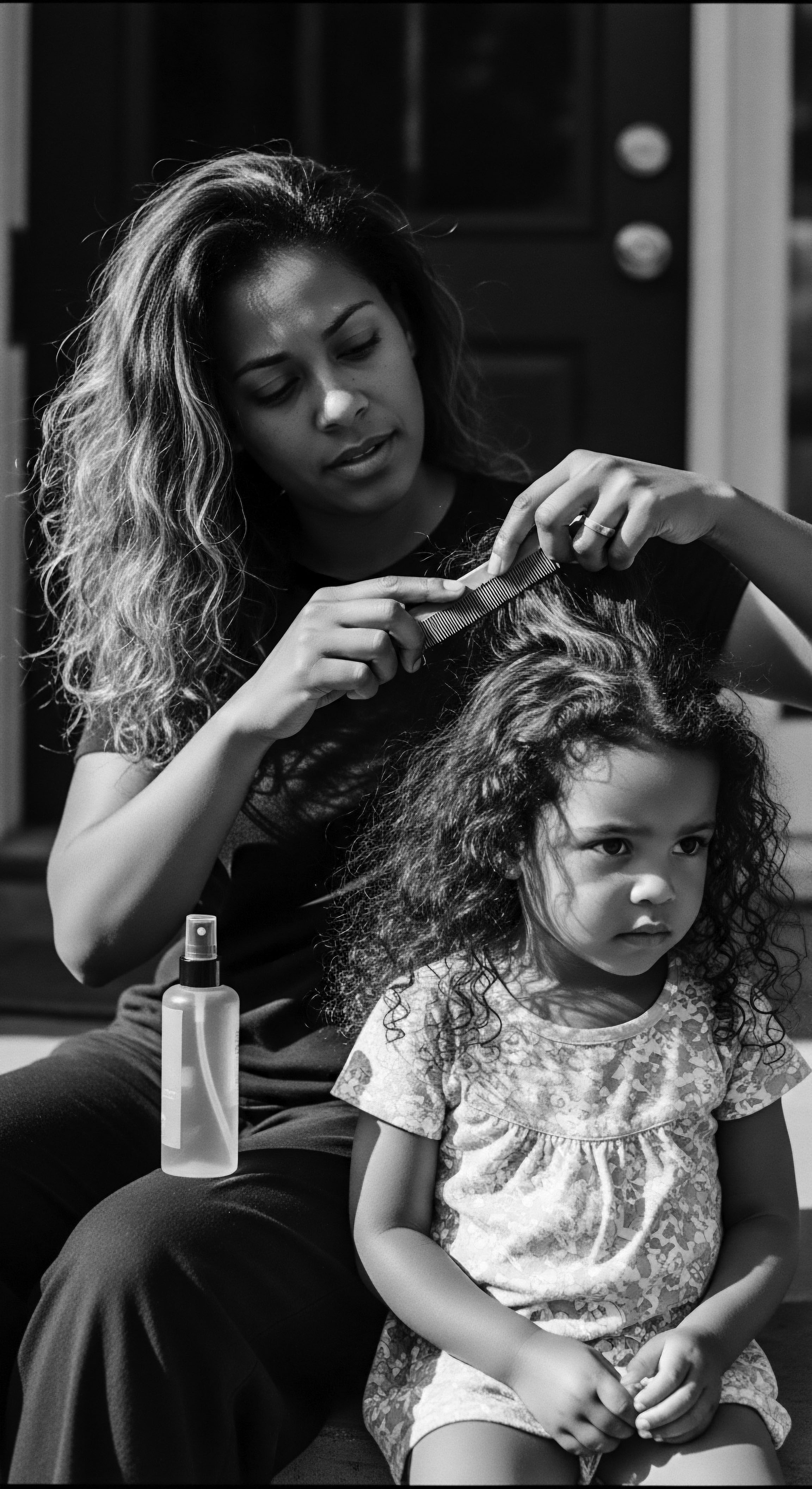
The Inductive Dialogue ❉ A Heritage Perspective
The concept of inductive signaling, central to the dermal papilla’s function, finds an intriguing parallel in the historical and anthropological understanding of hair as a cultural marker. Just as the dermal papilla signals the hair matrix to form specific hair types, traditional societies have used hair as a powerful medium to signal identity, status, and community affiliation. This biological “language” of the papilla, dictating the hair’s inherent structure, provides a scientific underpinning for the diverse and resilient hair types that have historically shaped cultural practices across the African diaspora.
Consider the historical and anthropological studies of hair care in various African communities. These investigations frequently reveal meticulous, time-honored rituals that, while not explicitly referencing the dermal papilla, intuitively supported its optimal function. For instance, the systematic use of natural emollients like Shea Butter (from the Vitellaria paradoxa tree, indigenous to West Africa) or Argan Oil (from the Argania spinosa tree, native to Morocco), often applied with deliberate scalp massage, was not merely for aesthetic purposes.
These practices served to maintain scalp health, reduce inflammation, and improve microcirculation, thereby enhancing the delivery of vital nutrients and signaling molecules to the dermal papilla. Such practices, documented in ethnobotanical research, represent an ancestral form of sophisticated follicular care.
A compelling example of this ancestral wisdom’s efficacy can be gleaned from studies on the physiological benefits of scalp massage. While direct studies linking specific traditional African massage techniques to dermal papilla activity are rare, research into general scalp massage has demonstrated its capacity to influence follicular health. For instance, a pilot study by Koyama Et Al. (2016) published in the Dermatology and Therapy journal, observed that standardized scalp massage could increase hair thickness and improve blood flow to the scalp.
This scientific validation provides a modern lens through which to appreciate the intuitive wisdom embedded in ancestral practices, where gentle manipulation and nourishing applications to the scalp were commonplace, likely contributing to the health and vitality of the dermal papilla and, by extension, the robust growth of textured hair. The persistent, gentle stimulation inherent in many traditional African hair-braiding and styling rituals, beyond their aesthetic and cultural significance, could be seen as an ongoing, subtle form of dermal papilla support, maintaining a healthy microenvironment for sustained hair growth.
Academic inquiry into the dermal papilla reveals its role as a master regulator of hair growth, with its inductive signaling capabilities subtly supported by ancestral textured hair care practices.
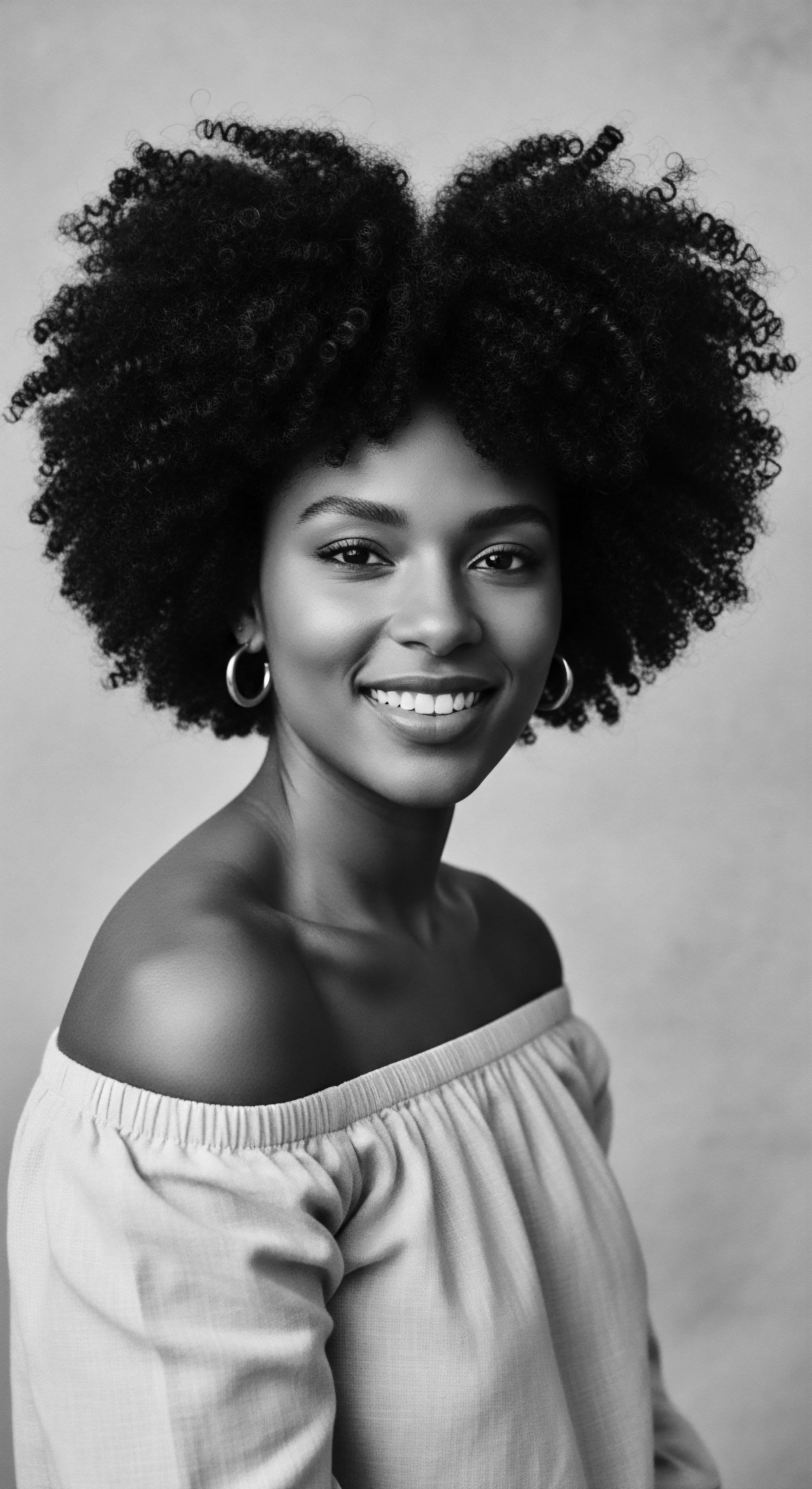
Hair Follicle Niche and Ancestral Resilience
The dermal papilla resides within a specialized microenvironment known as the hair follicle niche, a complex interplay of various cell types, extracellular matrix components, and signaling gradients. This niche is crucial for maintaining the stem cell populations responsible for hair regeneration. The integrity of this niche, particularly the dermal papilla’s interaction with follicular stem cells, is paramount for continuous hair cycling. Disruptions to this delicate balance, whether from genetic predispositions, environmental stressors, or iatrogenic factors, can lead to various forms of hair loss, including conditions disproportionately affecting individuals with textured hair, such as central centrifugal cicatricial alopecia (CCCA) or traction alopecia.
From a socio-historical perspective, the resilience of textured hair, often subjected to harsh treatments and societal pressures, can be partly attributed to the inherent robustness of its follicular biology, underpinned by the dermal papilla’s enduring capacity for regeneration. However, the historical imposition of practices that compromised scalp health—such as aggressive chemical relaxers, excessive heat styling, or tight braiding without proper tension management—presented significant challenges to this delicate niche. These practices could induce chronic inflammation or mechanical stress, directly impacting the dermal papilla’s function and potentially leading to fibrotic changes within the follicle. The historical narrative of Black hair, therefore, becomes a compelling case study of how external forces can interact with intrinsic biological mechanisms, influencing the long-term health and expression of hair.
The reclamation of traditional hair care practices and the growing scientific interest in the unique biology of textured hair represent a convergence of ancestral wisdom and modern inquiry. Research into the specific cellular and molecular characteristics of dermal papilla cells in individuals with different hair textures could yield profound insights into genetic predispositions for certain hair types and susceptibilities to specific hair disorders. This academic pursuit not only advances our understanding of hair biology but also validates and elevates the deep, experiential knowledge preserved within Black and mixed-race hair traditions. The future of hair science, in this regard, increasingly recognizes the importance of culturally informed research, acknowledging that the nuances of hair biology are inextricably linked to the diverse human experiences that have shaped its care and expression over millennia.
| Traditional Practice Scalp Oiling with Shea Butter/Plant Extracts |
| Associated Cultural Context West Africa, Caribbean; often communal rituals, passed down through matriarchal lines. |
| Potential Dermal Papilla Benefit (Modern Interpretation) Improved microcirculation, anti-inflammatory effects, nutrient delivery to the papilla, creating an optimal environment for growth. |
| Traditional Practice Gentle Scalp Massage |
| Associated Cultural Context Common across various African and diasporic communities, part of daily grooming and bonding. |
| Potential Dermal Papilla Benefit (Modern Interpretation) Increased blood flow to the hair bulb, potentially enhancing the supply of oxygen and growth factors to the dermal papilla. |
| Traditional Practice Protective Styling (Braids, Twists, Locs) |
| Associated Cultural Context Ancient African heritage, symbolic of status, identity, and protection; widespread in the diaspora. |
| Potential Dermal Papilla Benefit (Modern Interpretation) Minimized physical stress on the hair shaft and follicle, preserving the integrity of the dermal papilla and allowing for undisturbed growth. |
| Traditional Practice Use of Rhassoul Clay/Herbal Washes |
| Associated Cultural Context North Africa (Morocco); traditional cleansing and conditioning for hair and skin. |
| Potential Dermal Papilla Benefit (Modern Interpretation) Gentle cleansing that avoids stripping natural oils, maintaining scalp microbiome balance, indirectly supporting a healthy follicular niche. |
| Traditional Practice These ancestral practices, born from generations of observation and communal wisdom, intuitively fostered conditions that modern science now attributes to a healthy dermal papilla and robust hair growth. |
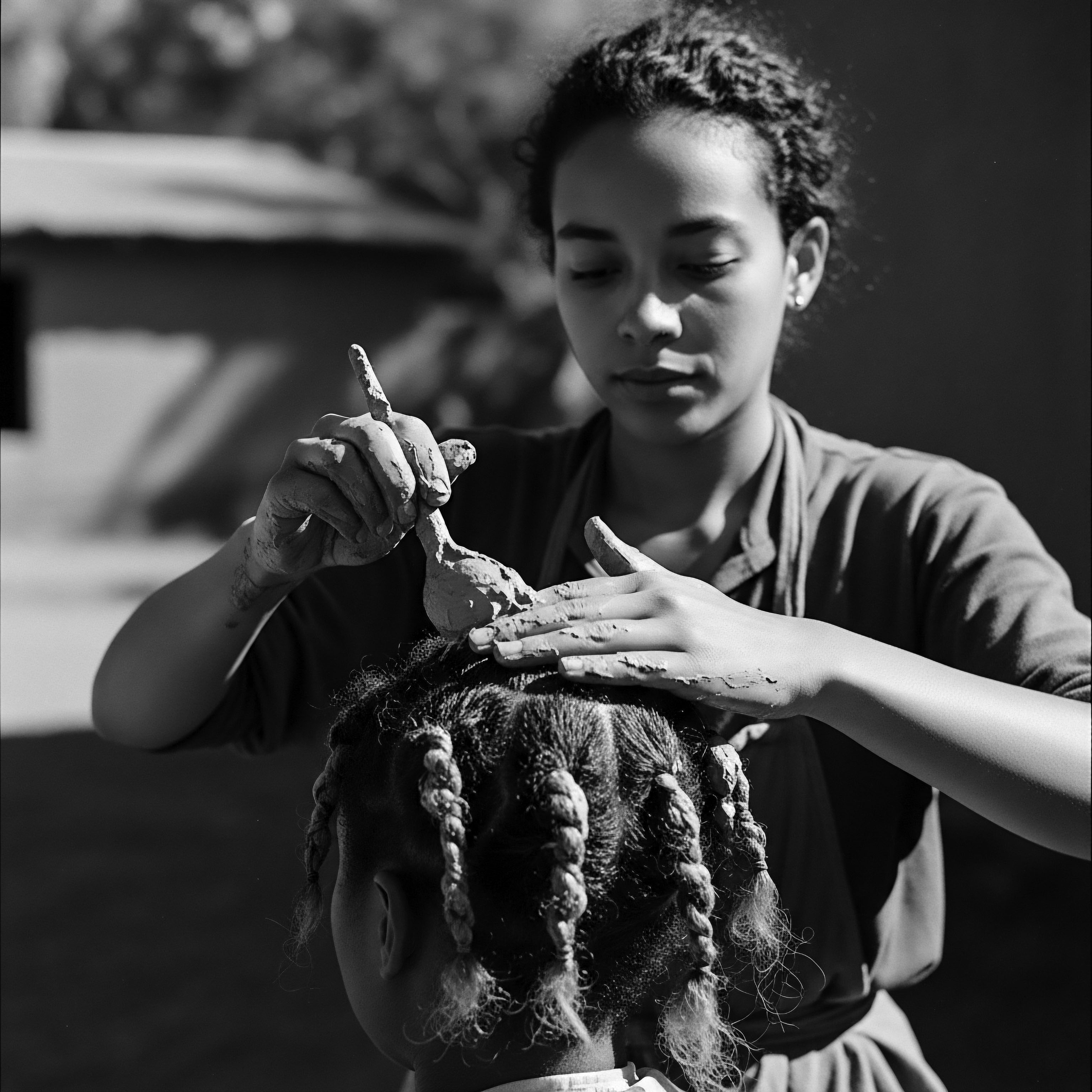
Reflection on the Heritage of Dermal Papilla
As we draw this exploration of the Dermal Papilla to a close, the whispers of history and the vibrant pulse of living traditions coalesce into a profound understanding. The dermal papilla, this seemingly small biological component, is not merely a scientific curiosity; it stands as a testament to the enduring narrative of textured hair, a silent witness to the triumphs, trials, and resilience woven into the very fabric of Black and mixed-race identities. Its continuous activity, giving rise to each magnificent coil, kink, and wave, mirrors the unbroken lineage of ancestral wisdom that has guided hair care for millennia.
The journey from the elemental biology of the dermal papilla, “Echoes from the Source,” reminds us that the capacity for growth is inherent, a gift passed down through our very genetic code. Our forebears, without microscopes or biochemical assays, understood the profound connection between a healthy scalp and flourishing hair. Their “Tender Thread” of care, manifest in nourishing oils, gentle massages, and protective styles, was an intuitive symphony of practices that, in retrospect, perfectly aligned with fostering an optimal environment for this vital cellular cluster. This historical continuity compels us to recognize the deep scientific merit within what might have been dismissed as mere folk wisdom.
The story of the dermal papilla, when viewed through the lens of textured hair heritage, becomes a compelling argument for self-acceptance and reverence for one’s natural being. It speaks to the “Unbound Helix,” symbolizing liberation from imposed standards and a return to practices that honor the hair’s inherent beauty and strength. To care for our dermal papilla, then, is to care for our roots, both literally and metaphorically.
It is an act of reclaiming, of healing, and of celebrating the rich, diverse tapestry of hair that has always been, and will always be, a powerful expression of identity and heritage. This understanding allows us to move forward, grounded in the past, yet free to chart new paths of care that continue to honor the sacred bond between our hair and our ancestral spirit.

References
- Byrd, A. & Tharps, L. (2001). Hair Story ❉ Untangling the Roots of Black Hair in America. St. Martin’s Press.
- Koyama, T. Kobayashi, K. Hama, T. Birch, M. P. & Nishimura, E. K. (2016). Standardized Scalp Massage Results in Increased Hair Thickness by Inducing Stretching Forces to Dermal Papilla Cells in the Human Hair Follicle. Dermatology and Therapy, 6 (1), 1-10.
- Paus, R. & Cotsarelis, G. (2008). The Biology of Hair Follicles. The New England Journal of Medicine, 359 (15), 1552-1561.
- Rogers, G. E. & Langbein, L. (2017). The Human Hair Follicle ❉ A Specialized Miniorgan with Complex Regulation. Experimental Dermatology, 26 (4), 317-325.
- Tobin, D. A. (2008). The Black Hair Handbook ❉ A Practical Guide to Healthy Hair for Women of Color. Atria Books.
- Van Neste, D. (2004). Human Hair Follicle Biology and the Dermal Papilla. Clinical and Experimental Dermatology, 29 (1), 7-11.
- West, C. (2008). African American Women and Hair ❉ A Cultural History. University Press of Mississippi.
